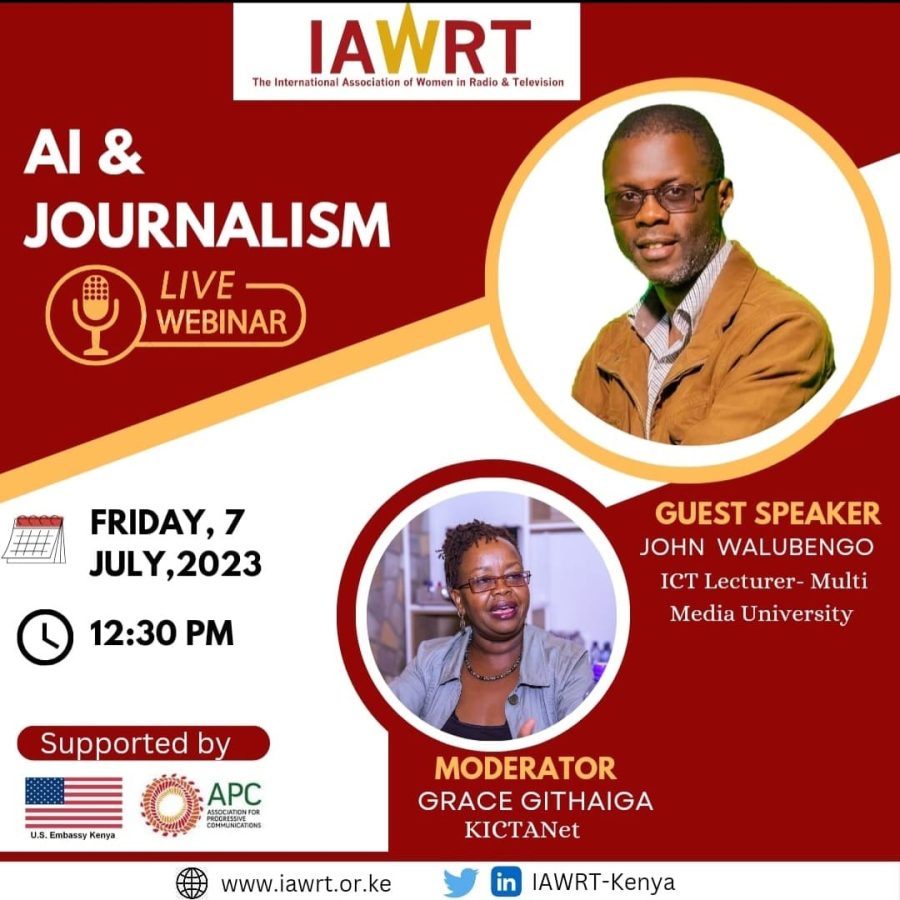Artificial intelligence (AI) has become a prominent topic in technology discussions, with its impact reaching various industries, including journalism. In a recent webinar organized by the International Association of Women in Radio and Television (IAWRT) and supported by the Association for Progressive Communication (APC) and the US Embassy in Kenya, KICTANet made significant contributions to shed light on this subject. The webinar, moderated by Grace Githaiga, CEO and Convenor of KICTANet, and featuring John Walubengo, Trustee at KICTANet, explored the different aspects of AI in journalism, its types and use cases, and the associated benefits and risks.
Understanding Artificial Intelligence in Journalism:
Walubengo addressed, to effectively utilize AI technology, journalists must first grasp its fundamental workings. Journalists serve as the interface between the public and the media, making it crucial for them to comprehend the mechanics behind AI. This understanding empowers journalists to make informed decisions and navigate their careers successfully in the evolving media landscape.
The Virtue and Vice of Recommendation Systems:
John, pointed out, one significant AI application in journalism is the recommendation system, which can be both a virtue and a vice. While recommendation algorithms tailor news based on users’ preferences, this presents a challenge known as the social construct of news. The algorithm’s influence means that news content can differ greatly between individuals. Consequently, what one person considers news might not align with another’s perspective. This poses a considerable risk to journalism, as it can lead to information silos and limited exposure to diverse viewpoints.
Benefits, Risks, and the Path Ahead:
AI brings a range of benefits and risks to the field of journalism as pointed out by John. On the one hand, AI-powered tools can streamline content creation, distribution, editing, transcription, and data analysis processes, enhancing efficiency and productivity. However, these advancements raise concerns about potential job losses in various media departments. Journalists must approach AI cautiously, recognizing its potential inaccuracies and limitations. Grace advised, “By embracing lifelong learning and keeping abreast of new opportunities, journalists can adapt and find novel ways to leverage this transformative technology.”
KICTANet, with its active involvement in the webinar, continues to contribute to the exploration of AI’s role in journalism. Their expertise and insights provide valuable guidance to journalists and media professionals in navigating the challenges and opportunities presented by AI. By actively engaging with industry stakeholders, promoting awareness, and fostering a culture of continuous learning, KICTANet plays a pivotal role in shaping the future of AI in journalism. Through their efforts, journalists can leverage AI while staying mindful of its risks, ensuring that the public receives accurate, diverse, and reliable news in the digital era.
Neema Mujesia, is a Communications personnel at KICTANet
![]()




